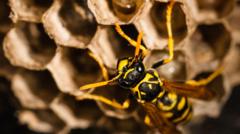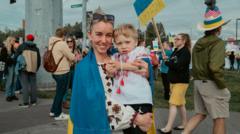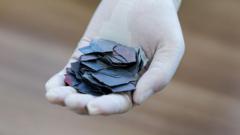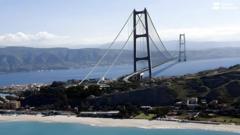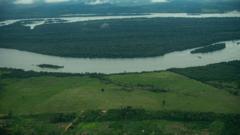A startling report from the US Department of Energy has revealed that a radioactive wasp nest was found at the Savannah River Site (SRS) near Aiken, South Carolina, a facility with a history of producing components for nuclear weapons. The nest was detected during routine inspections for nuclear radiation on July 3, where it was noted to have radiation levels ten times higher than permitted by federal regulations.
The Department of Energy acted swiftly, spraying the nest to eliminate the wasps and subsequently bagging it as radiological waste. Officials clarified that the discovery did not indicate a leak from the nearby liquid nuclear waste storage facilities, affirming that there was no discernible impact on the ecosystem or public health.
However, environmental activists have voiced their concerns over the incident, with watchdog group Savannah River Site Watch calling for more transparency from the government. The spokesman, Tom Clements, expressed frustration over unanswered questions regarding the source of the radioactive material and whether there might be undetected leaks from the facility's aging underground storage tanks.
Investigators attribute the elevated radiation readings from the nest to what they refer to as "onsite legacy radioactive contamination," remnants from the site's historical role in plutonium production during the Cold War era. While the nest was found close to where millions of gallons of liquid nuclear waste are stored, officials maintain that no contamination was detected in the surrounding area and that the wasps that once inhabited the nest would have been exposed to considerably lower radiation levels.
The Savannah River Site has undergone significant changes since opening its doors in the 1950s, now focusing on supporting nuclear power generation instead of weapon development. Despite reassurances from authorities, some local residents and environmentalists remain vigilant and question the potential long-term impacts of historical activities on their community.

